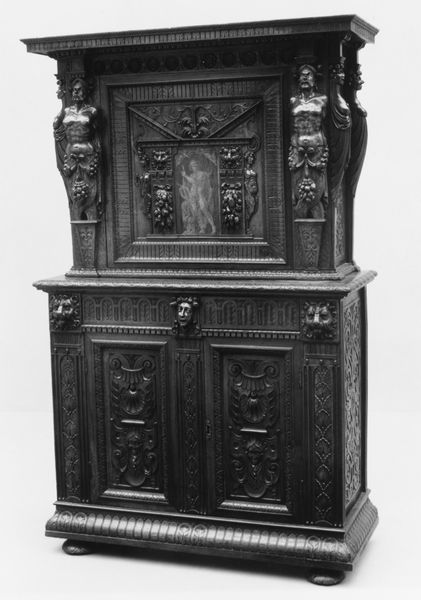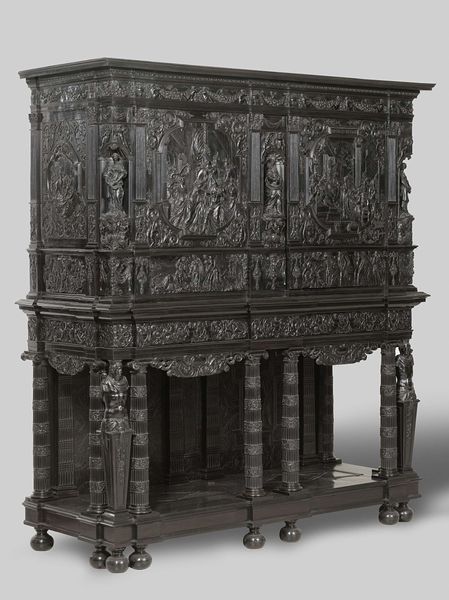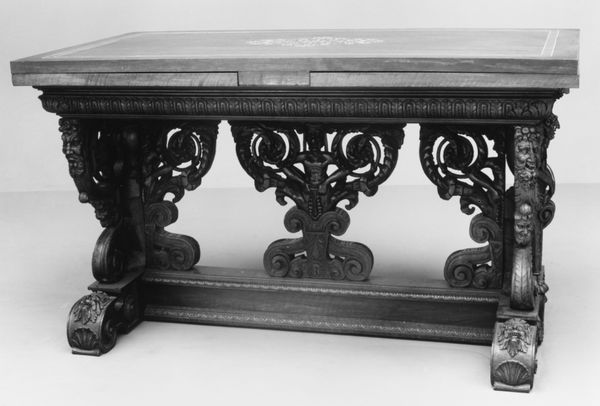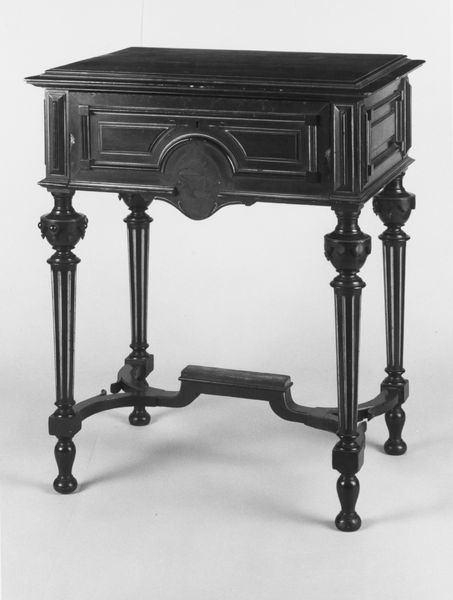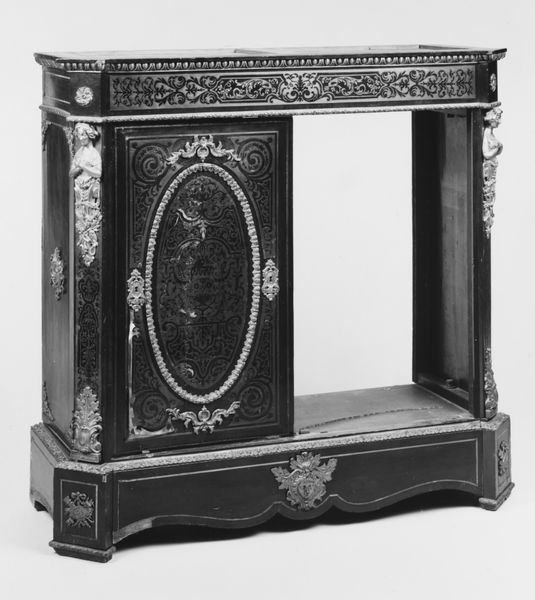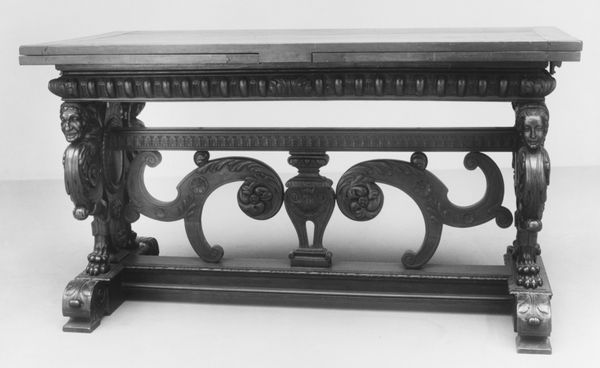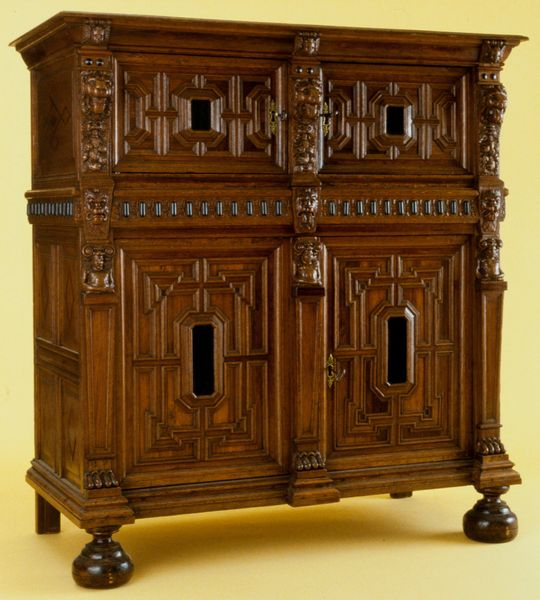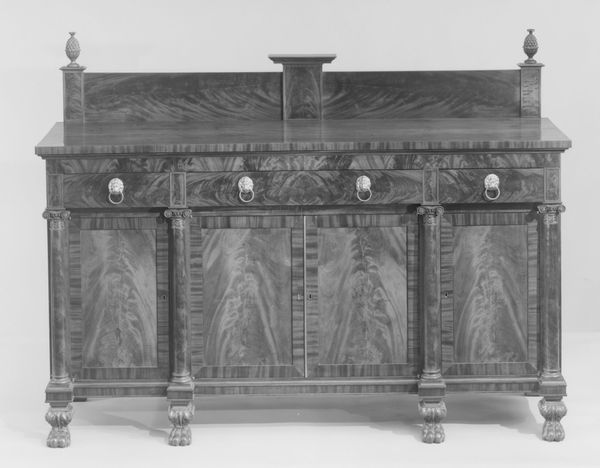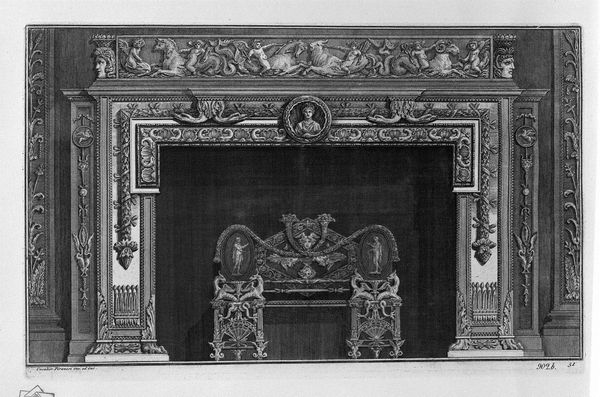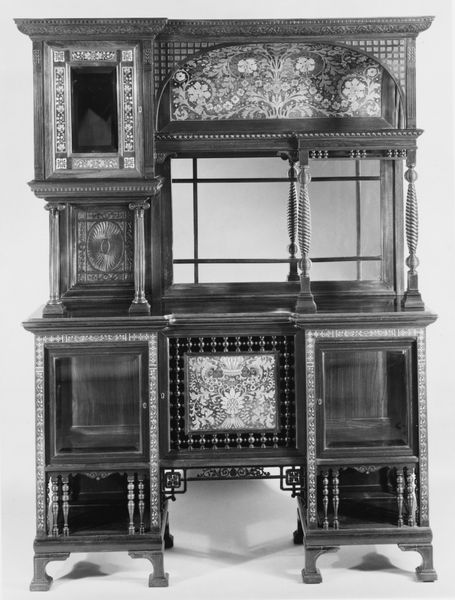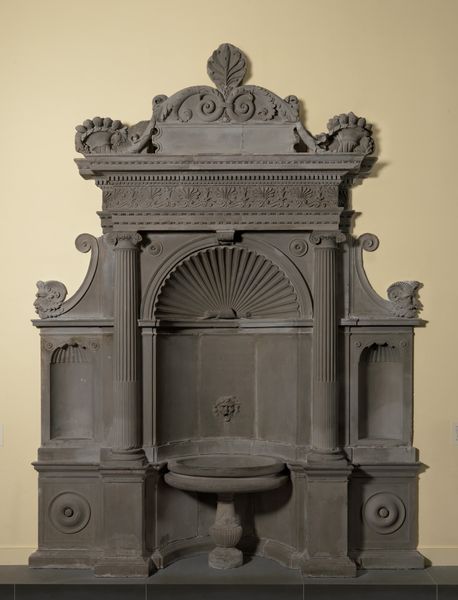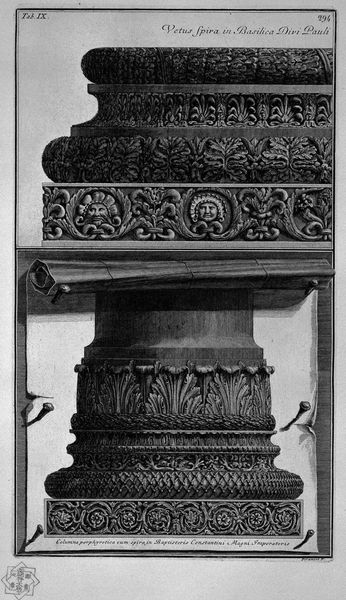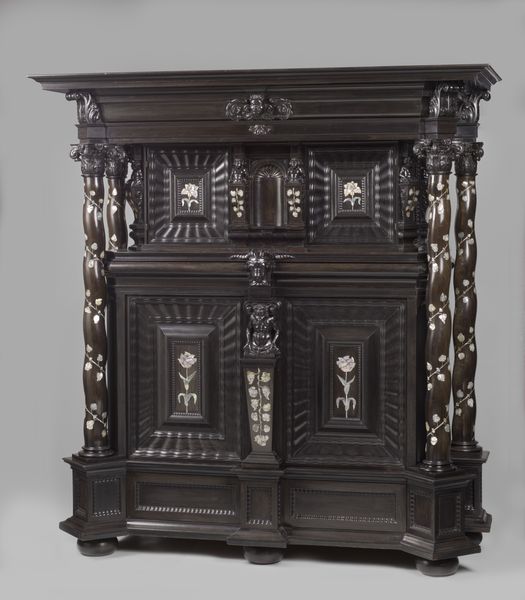
carving, sculpture, wood
#
carving
#
sculpture
#
furniture
#
11_renaissance
#
sculpture
#
wood
#
decorative-art
Dimensions: Overal: 60 × 46 1/4 × 21 1/8 in. (152.4 × 117.5 × 53.7 cm)
Copyright: Public Domain
This cabinet was made in France, around 1570, by Hugues Sambin, from walnut wood. The deep, rich color and intricate carvings speak to both the material and the maker’s skill. Think about the qualities of walnut: its density allows for sharp detail, as you can see in the faces, foliage, and heraldic shields. It is a testament to Sambin's virtuosity as a designer and woodcarver. The cabinet would have been commissioned by someone of high status and wealth, as it represents a significant investment of time and skill. The labor-intensive process of hand-carving each element underscores the value placed on craftsmanship during the Renaissance. Cabinets like this one were not just functional; they were statements of power, taste, and erudition. Considering the material, the making, and the social context gives us a much richer understanding of this object. It transcends simple categorization as either art or craft.
Comments
No comments
Be the first to comment and join the conversation on the ultimate creative platform.

